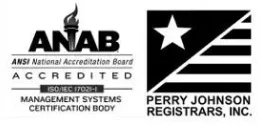Aerospace History: The Space Shuttle
The Space Shuttle program in the United States began to be conceived as early as 1968. The aim was to send manned shuttles into space for research and explorative purposes, but the Space Shuttle program differed from previous space explorations in a major way. Instead of creating vehicles that were destroyed upon re-entry, NASA sought to create vehicles that were reusable. Unlike earlier spacecraft, the shuttles could land much like airplanes. As their technology improved, the first shuttle, the Columbia, was launched in 1981. This shuttle was sent on twenty-seven voyages before it was fatally destroyed on a return trip, resulting in the death of the entire crew.
Similarly, the second shuttle, the Challenger, completed nine flights before a fatal explosion. While this was certainly daunting, not to mention traumatic, for the staff at NASA, they were not to be discouraged. Three years later, with better safety procedures and updated technology in place, the Discovery was unveiled. It went on to fly thirty-nine missions in its lifetime and was finally retired successfully. The Endeavour and Atlantis rounded up the fleet, and also enjoyed a number of successful voyages before retirement.
View a timeline of all of the space shuttle flights, with additional crew and mission details of each one.
The Space Shuttle program began in the early 70s with a goal of creating a space transportation system that was reusable instead of being destroyed on each return trip.
The Discovery was the orbiter that few the most missions out of any other ships. Its total time in space amounted to a year.
This slideshow presentation covers the entire disaster surrounding the Challenger in 1986, with explanations of what went wrong.
This report details the Space Shuttle Columbia’s mission and subsequent failed re-entry. It also
The first American woman to travel in space, Sally Ride, was an astronaut on the Challenger voyage in 1983.
The Space Shuttle Discovery’s final successful mission was celebrated with one last, highly publicized flight aboard a jumbo jet, before it was permanently housed at the Smithsonian Museum.
NASA officials speak out on some of their goals for the next wave of space exploration, which will focus on deep-space.
After the Enterprise last successful landing, it will be brought to JFK airport for a special celebration.
The Endeavour achieved a number of firsts in space shuttle history, including completing the first journey to reach the Hubble Space Telescope, and holding the very first space-borne female African-American astronaut.
Christa McAuliffe is a special name in space shuttle history because unlike the other highly trained scientists and engineers, she was a civilian high school teacher chosen among hundreds to join a space mission. Sadly, the mission failed when the Challenge exploded a little over a minute after launching.
John Glenn is best known as the first person from America to fully orbit the Earth. Apart from his time in the Mercury program, he also flew on the Space Shuttle Discovery.
John Watts Young is famed for completing the most amount of time in space. Starting in 1965 aboard the Gemini mission, he also completed two Space Shuttle voyages as a commander.
View some quick facts and images of the five Space Shuttles that were created for NASA’s Space Shuttle program.
As the Space Shuttle program drew to a close, it was celebrated with nostalgia and pride. This compilation of articles takes a look at the highlights of the program and also considers what the future holds.
This magazine published by the Smithsonian covers everything on space exploration, spaceflight, and aeronautics.
On April 24, 1990, the Space Shuttle Discovery was launched with a very special mission: to transport and position the Hubble Space Telescope into orbit.
In the United States, an astronaut called Mae Jemison was the first female African-American who went into space, travelling aboard the Endeavour.
Guion Stewart Bluford was the very first African-American (regardless of gender) who travelled into space, eventually completing four Space Shuttle voyages.
The next wave of Space Shuttle travel (slated to begin in 2015) will be in small pods manufactured by the Boeing company, as opposed to the traditionally large shuttles.
This report examines the possibilities of future spaceflight and what missions astronauts may embark on.
Watch a filmed lecture by an MIT professor on the beginnings of Space Shuttle technology and the program.
Learn about the first Space Shuttle, the Enterprise, and its history, crew, and technology.
Read through different criticisms and praise for the Space Shuttle program in retrospect.
Watch a video that examines some of the highlights of the Space Shuttle program, along with its last flight.
View a photographic timeline of important highlights of the Space Shuttle’s history.
This article traces the origins of the Space Shuttle program and details its evolution to the present day.
The end of the Space Shuttle program marked a period of tremendous technological growth, achievement, and exploration.
See how the media, the public, and NASA reacted and responded to the Challenger disaster.
Discover the pros and cons of using robots instead of astronauts on future space missions.


